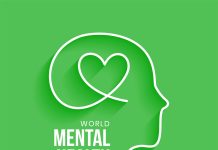A report by the NHS Race and Health Observatory finds “clear inequalities” in how ethnic minorities are less likely to be given Cognitive Behavioural Therapy (CBT)
The report, evaluating the service of ethnic minorities by the NHS, finds that there are “clear inequalities” running through various branches of healthcare. From mental health to maternal services, including the relationship between the institution and minority healthcare workers, there appear to be significant issues.
Dr Habib Naqvi, Director at the NHS Race and Health Observatory, said: “By drawing together the evidence, and plugging the gaps where we find them, we intend to make clear the overwhelming case for radical action on race inequity in our health service.
“Put another way, we exist to remove excuses.”
The shadow pandemic of mental health
During the COVID-19 pandemic, several other crises emerged. Experts say the healthcare backlog could take years to rectify, while services for mental health continue to be difficult to access. The mental health shadow pandemic is one that saw loneliness, depression and suicide rates increase among vulnerable communities in the UK. Some communities had less access to mental health help than others. With the NHS waiting list for therapy being notoriously long, individuals who are able to pay for private therapy are able to access help sooner.
In 2021, the Government-commissioned Sewell Report found that there was no longer institutional racism in the UK. But in this new report by the NHS Race and Health Observatory, links have been drawn between institutional racism and quality of healthcare.
While this issue appears to be divided along racial lines, another issue is access to Cognitive Behavioural Therapy. CBT is one of the most common forms of therapy, credited as a powerful tool in the treatment of a range of issues – from depression to trauma. However, the data compiled found that ethnic minorities with psychosis are less likely to be recommended to take CBT than white patients.
These groups were also found to be less likely to recommend themselves.
The report also points out that there are “clear, very large and persisting ethnic inequalities” in admission to psychiatric wards – “particularly affecting Black groups, but also Mixed Black & White groups and South Asian groups.”
Researchers alarmingly found that Black patients in psychiatric wards were more likely to be restrained and treated with force.
“Over-use of coercive mental health treatment”
Mental health treatment in relation to race can be a complex issue, with some communities raised to accept higher levels of psychological pain than others. However, the authors of this research emphasise that racism lies at the core of inequalities – both inside and outside of healthcare itself, at a foundational level. They recommend further research, more clear data made available and action at a Government level.
The report said: “In the UK context, the over-use of coercive mental health treatment under the mental health act for Black Caribbean and Black African groups and the under-use of specialist mental health services by South Asian (Indian, Pakistani and Bangladeshi) groups have been two of the main concerns articulated by health policy commentators, clinicians, and health researchers.”
When it comes to child mental health intervention, the findings of the report continued to provoke questions.
Two large national studies found that ethnic minority children were far more likely to be referred to CAMHS via social services, education or criminal justice pathways. Black children were found ten times more likely than White British children to be referred to the services, as opposed to being given help via their GP.
Dr Andres Roman-Urrestarazu, lead researcher from the Autism Research Centre (ARC) at the University of Cambridge, said: “We can now see that autism is much more common than previously thought. We also found significant variations in autism diagnosis in different ethnic minorities, though the reason why this should be the case isn’t clear and warrants further research.”
Data from a different study found that Chinese pupils are 38% more likely to have autism than white pupils, with Black pupils 26% more likely.











